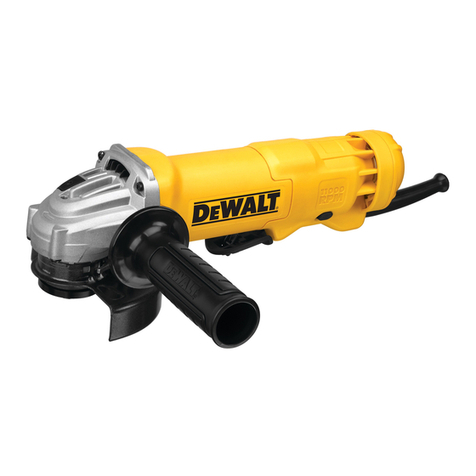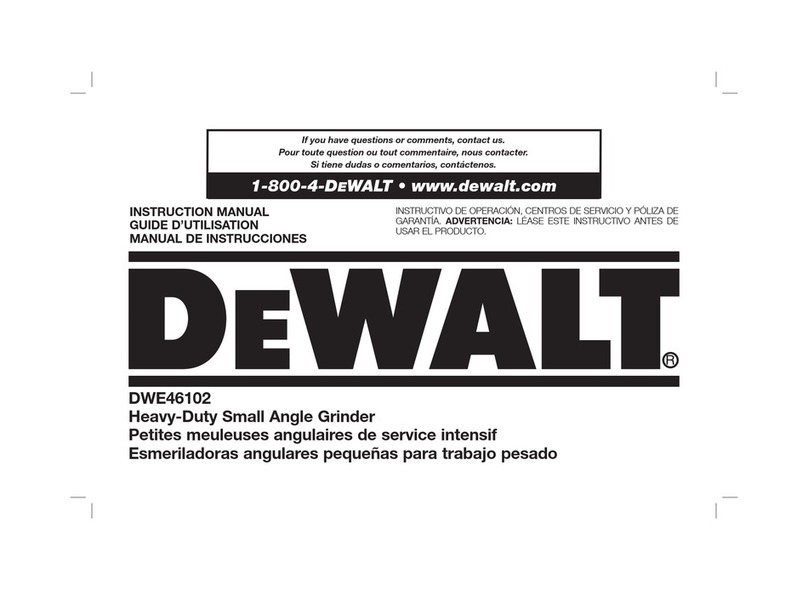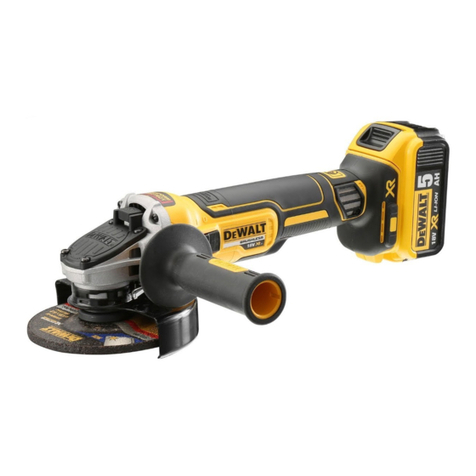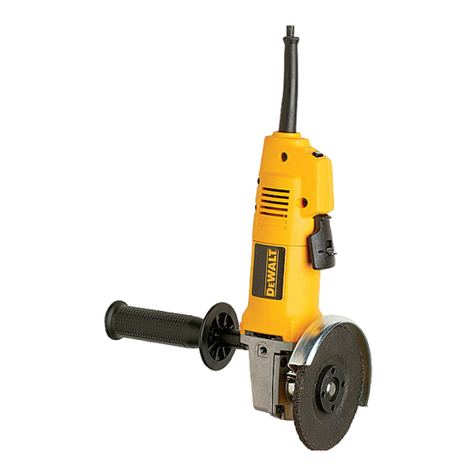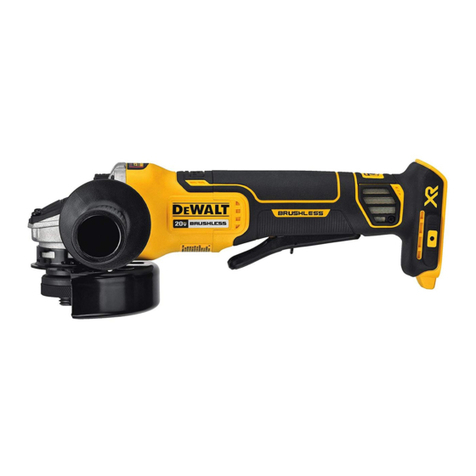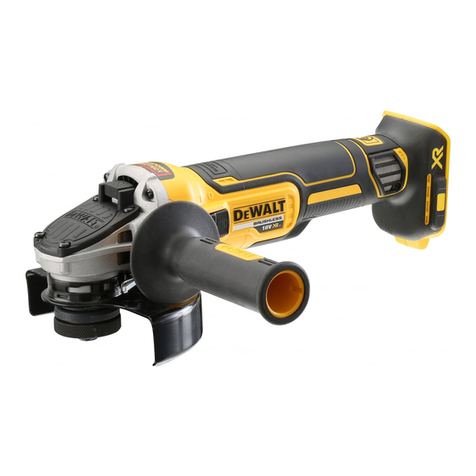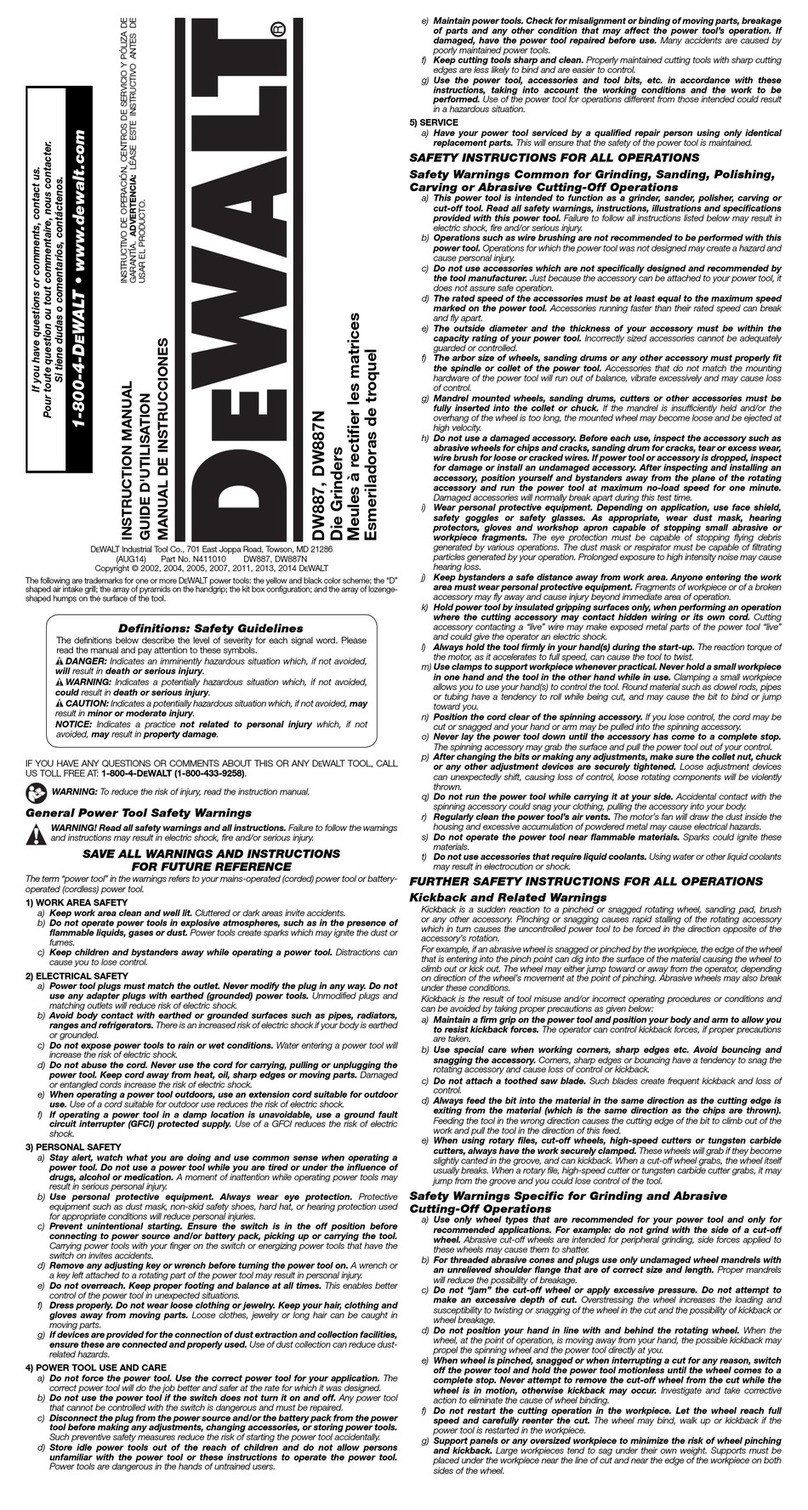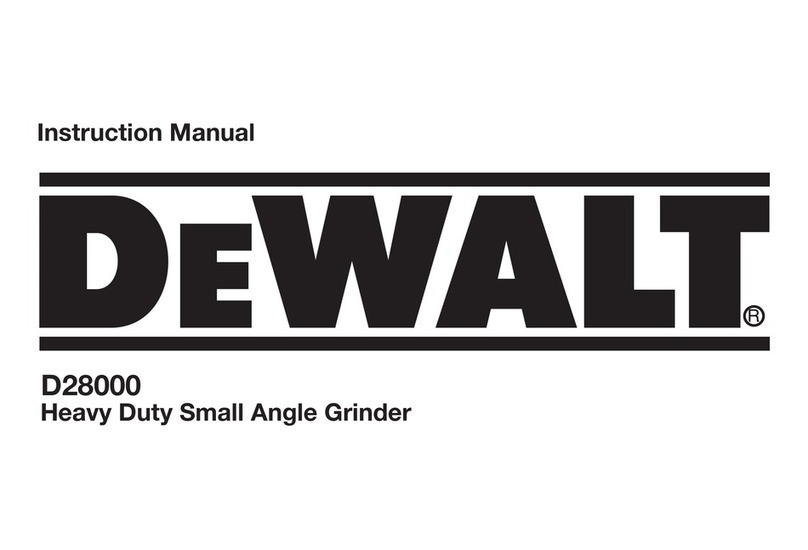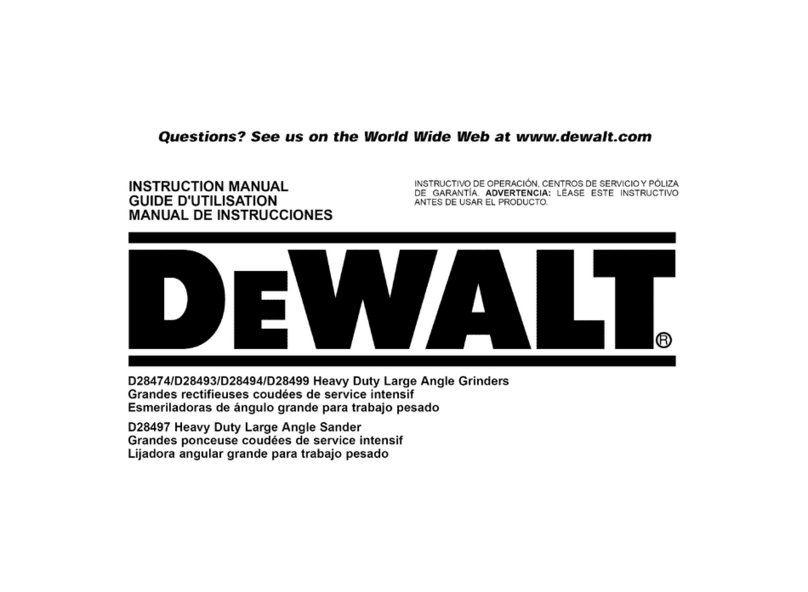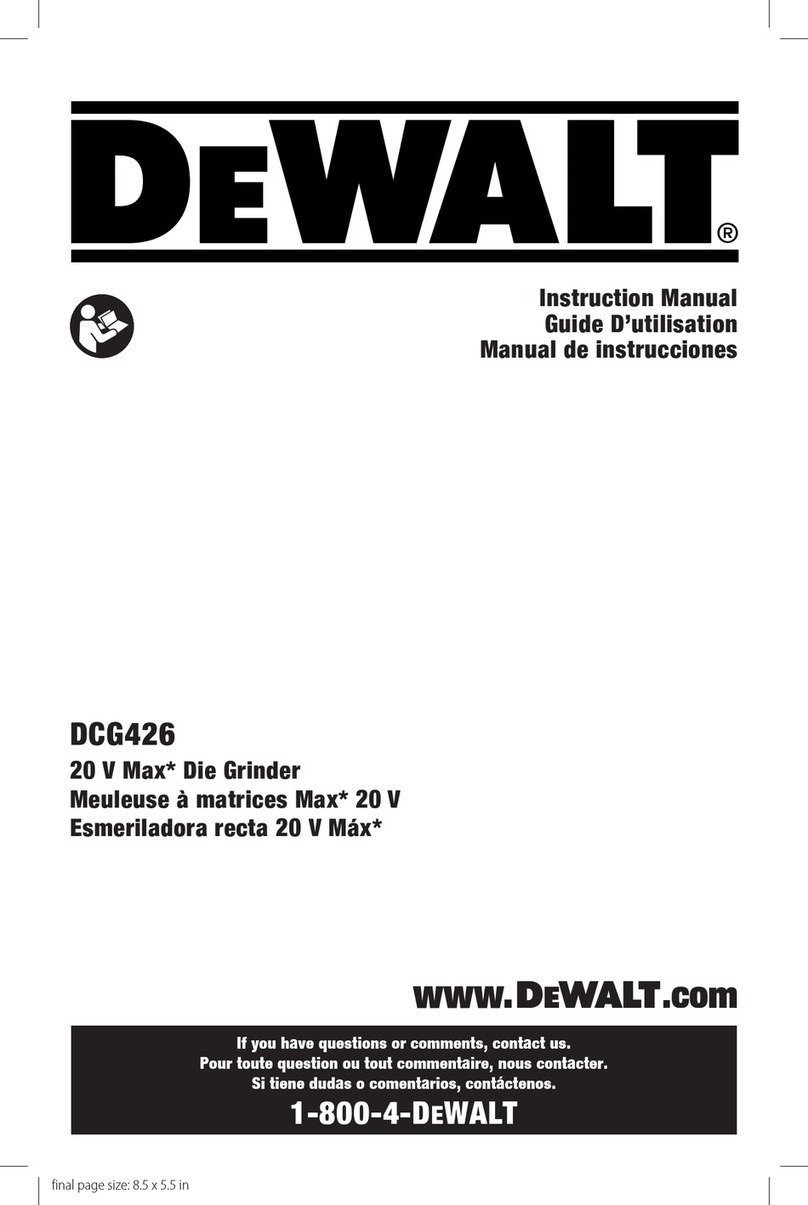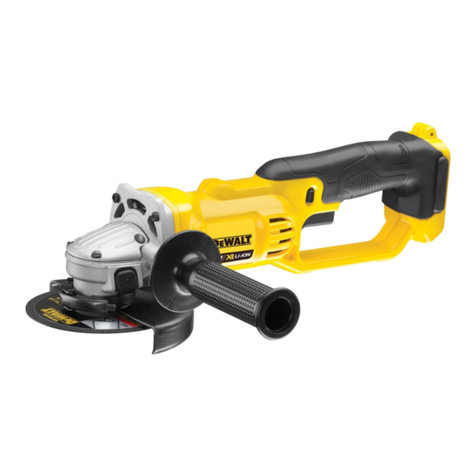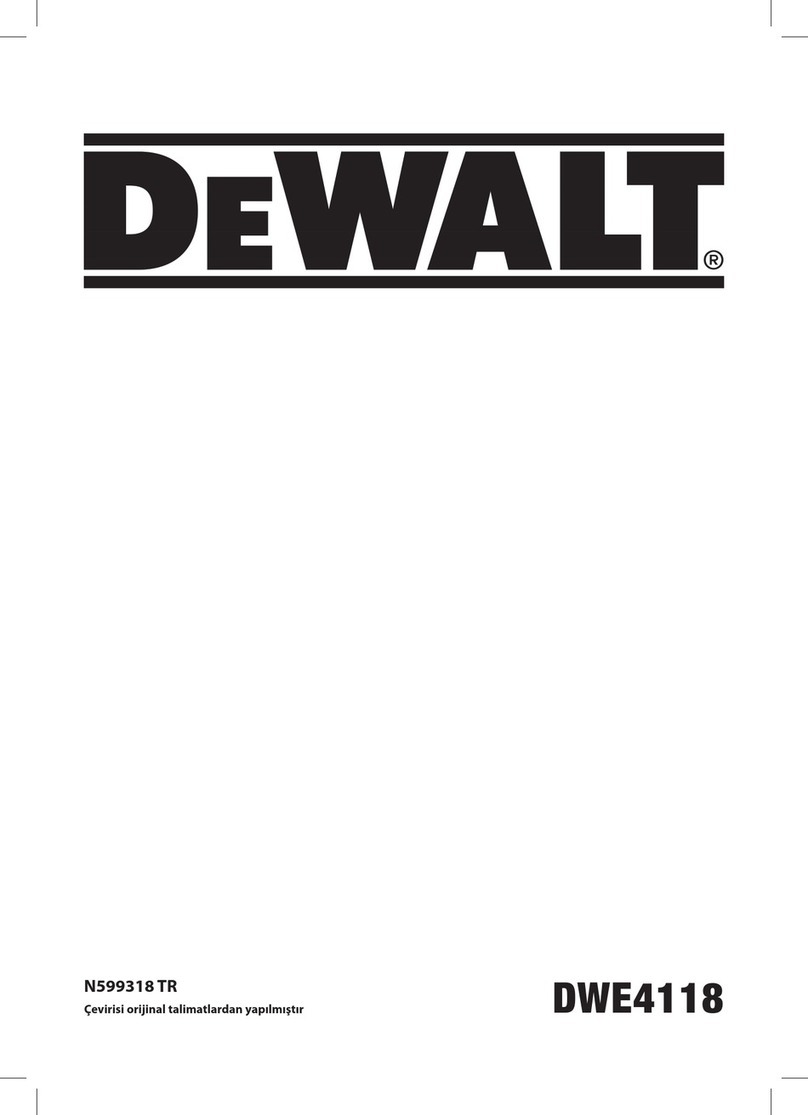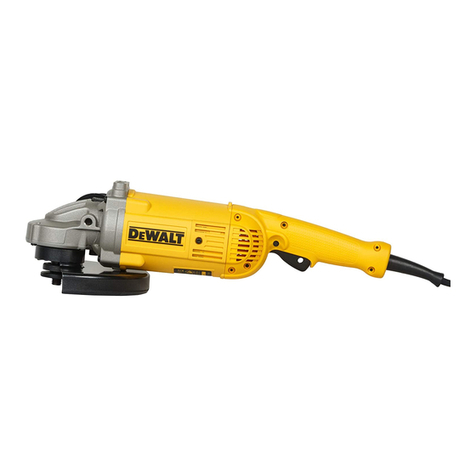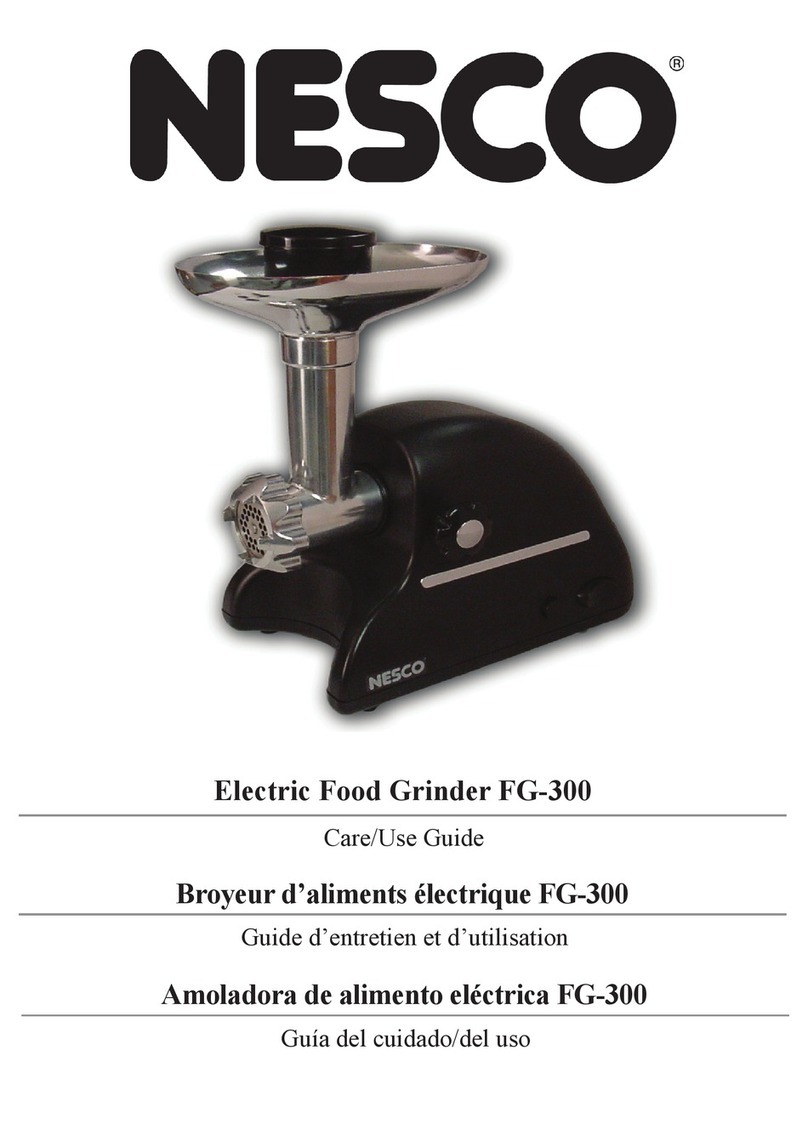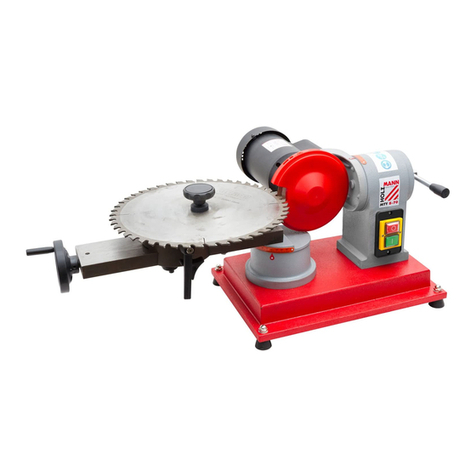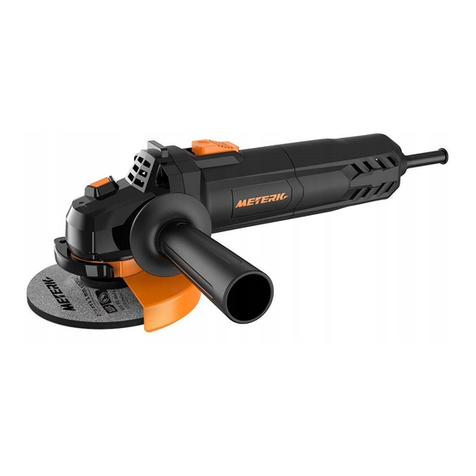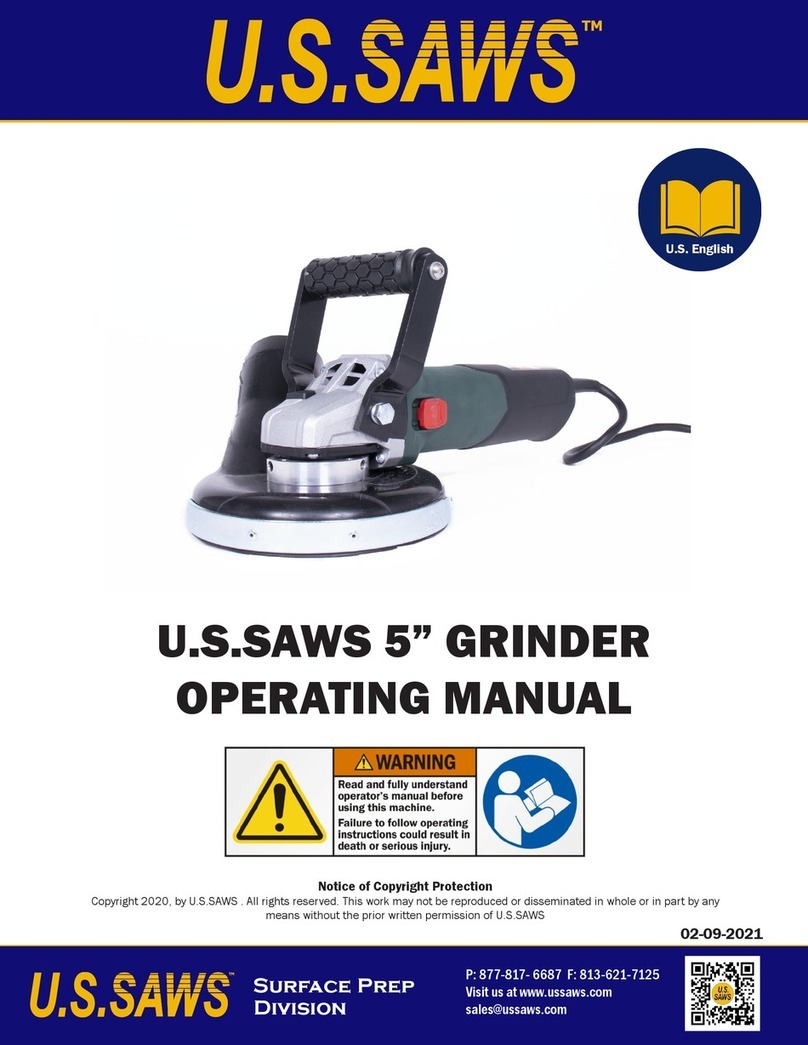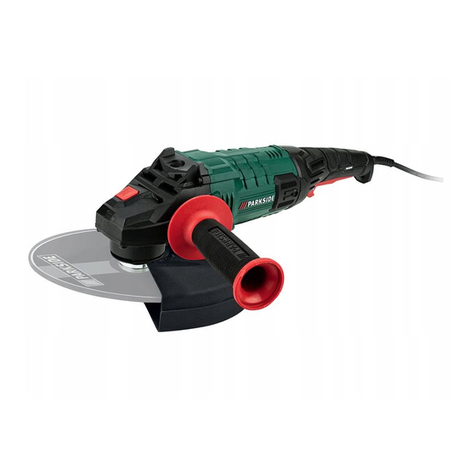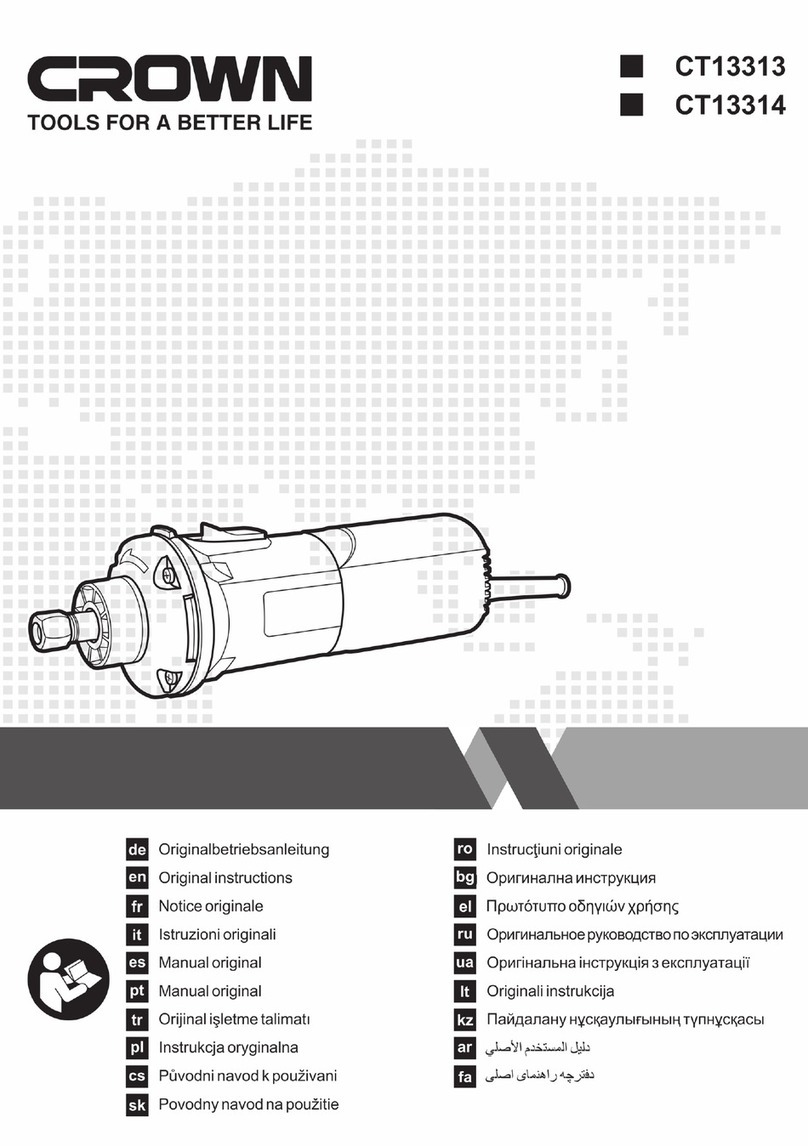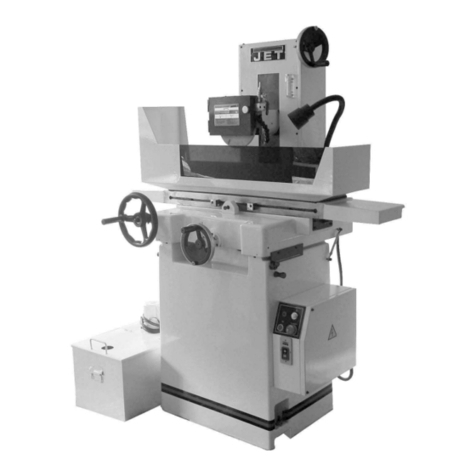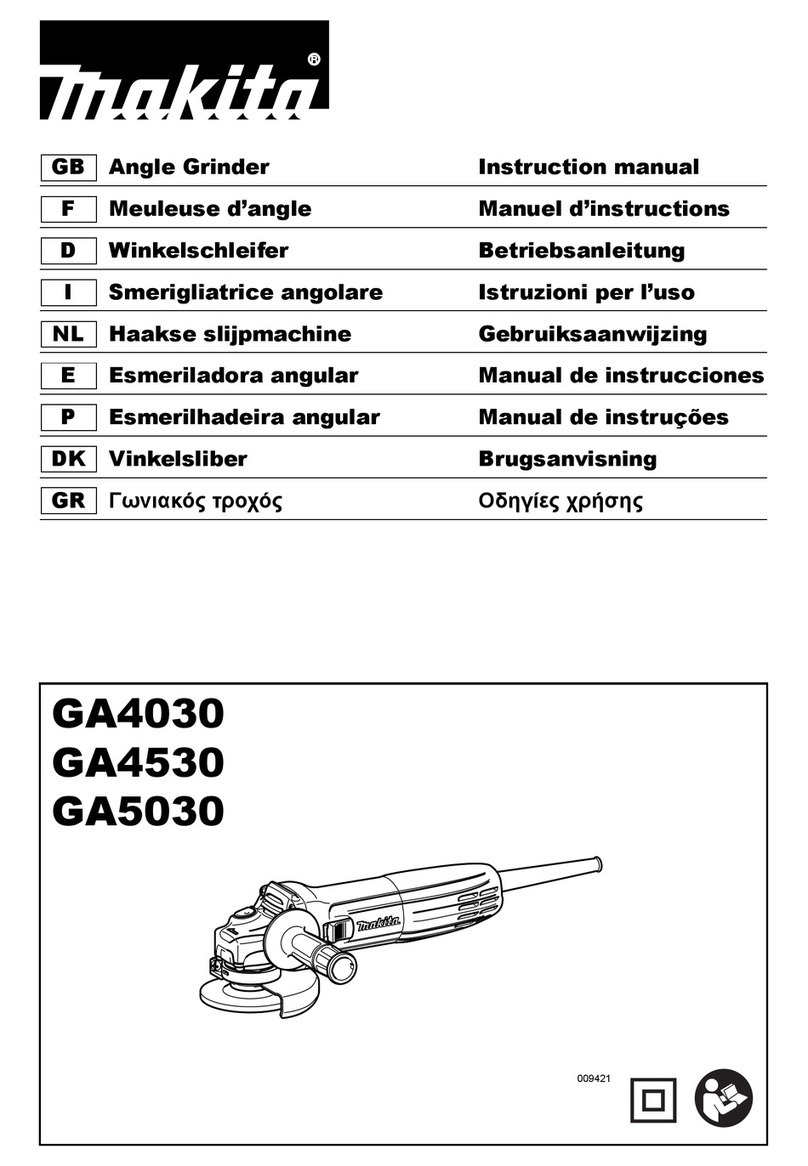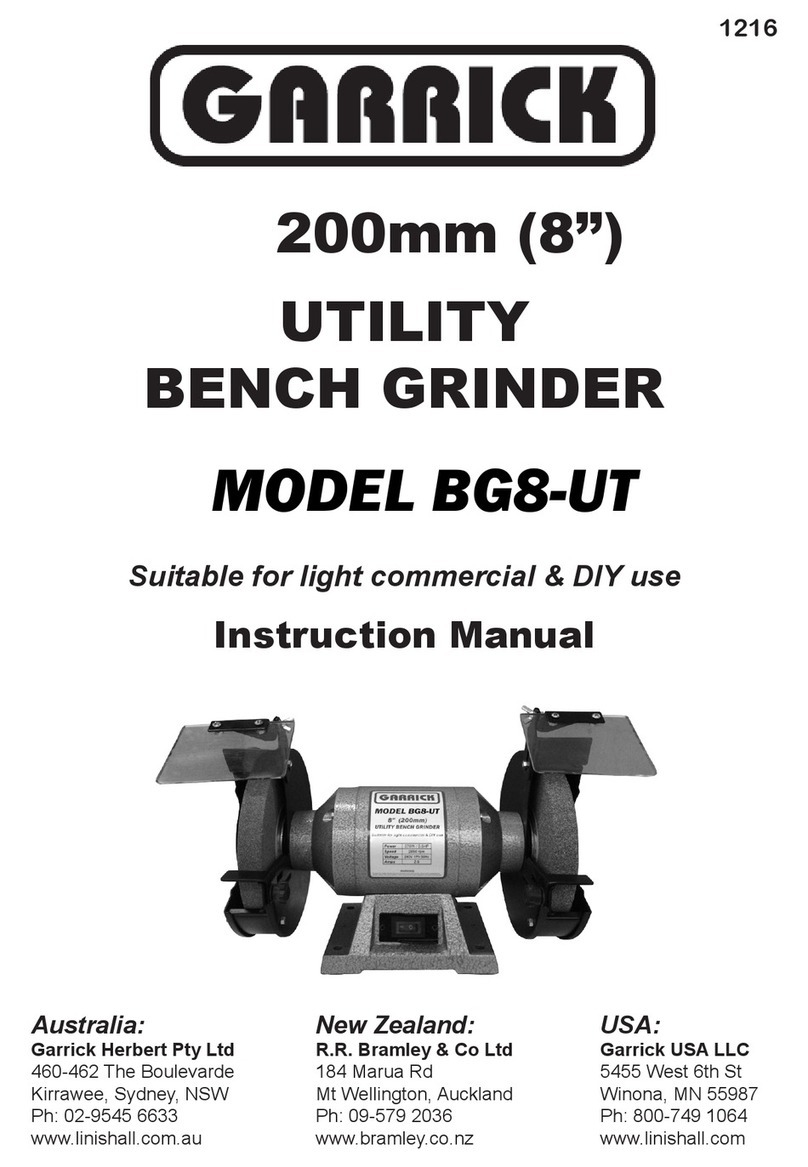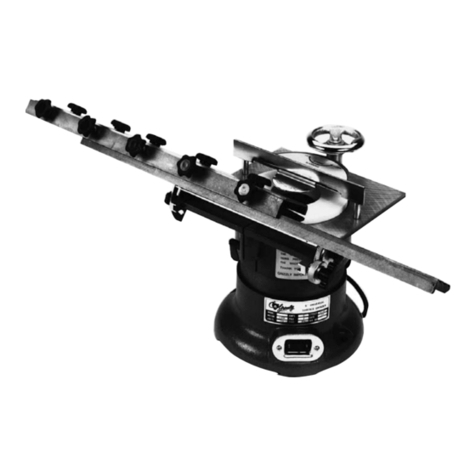English
3
minute. If the wire brush has loose wires, they will be detected.
Never start the tool with a person in line with the wheel. This
includes the operator.
• In operation, avoid bouncing the wheel or giving it rough
treatment. If this occurs, stop the tool and inspect the wheel.
• Direct sparks away from operator, bystanders or flammable
materials. Sparks may be produced while using a sander or
grinder. Sparks may cause burns or start fires.
• Always use side handle. Tighten the handle securely. The
side handle should always be used to maintain control of the tool
at all times.
CAUTION: Use extra care when grinding into a corner because a
sudden, sharp movement of the grinder may be experienced when the
wheel contacts a secondary surface.
• Clean out your tool often, especially after heavy use. Dust
and grit containing metal particles often accumulate on interior
surfaces and could create an electric shock hazard.
CAUTION: Wear appropriate personal hearing protection during
use. Under some conditions and duration of use, noise from this
product may contribute to hearing loss.
WARNING: Some dust created by power sanding, sawing,
grinding, drilling, and other construction activities contains chemicals
known to cause cancer, birth defects, or other reproductive harm.
Some examples of these chemicals are:
• lead from lead-based paints,
• crystalline silica from bricks and cement and other masonry
products, and
• arsenic and chromium from chemically-treated lumber (CCA).
Your risk from these exposures varies, depending on how often you
do this type of work. To reduce your exposure to these chemicals:
work in a well ventilated area, and work with approved safety
Additional Specific Safety Instructions
for Grinders
• Always use proper guard with grinding wheel. A guard
protects operator from broken wheel fragments and wheel
contact.
• Accessories must be rated for at least the speed recom-
mended on the tool warning label. Wheels and other
accessories running over rated speed can fly apart and cause
injury. Refer to the table below. Accessory ratings are above
rated no-load tool speeds because actual tool speeds may
vary.
NOTE: The rated no load tool speed is printed on the name plate
and embossed on the gear case.
Rated
no (no load) Minimum Accessory
Tool Speed Rating
6500 RPM 6600 RPM
8500 RPM 8500 RPM
• Hold tool by insulated gripping surfaces when performing
an operation where the cutting tool may contact hidden
wiring or its own cord. Contact with a “live” wire will make
exposed metal parts of the tool “live” and shock the operator.
• Before using, inspect recommended accessory for
cracks or flaws. If such a crack or flaw is evident, discard the
accessory. The accessory should also be inspected whenever
you think the tool may have been dropped.
• When starting the tool with a new or replacement wheel, or
a new or replacement wire brush installed, hold the tool in a
well protected area and let it run for one minute. If the wheel
has an undetected crack or flaw, it should burst in less than one
